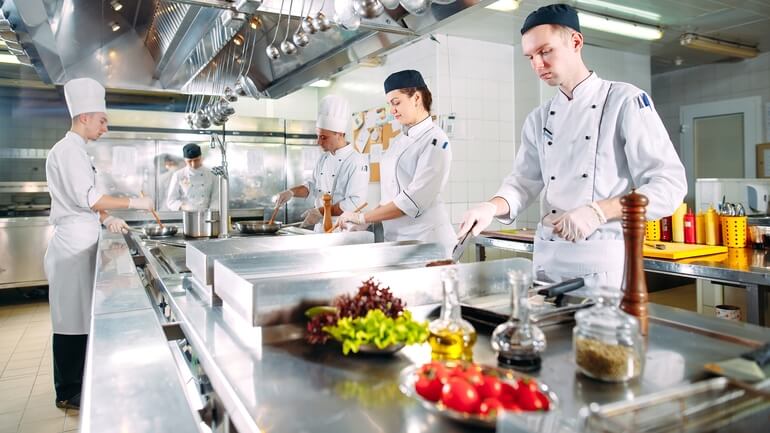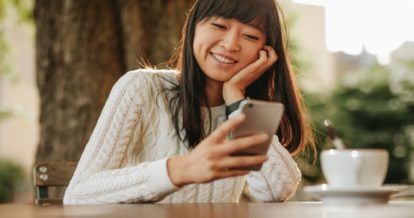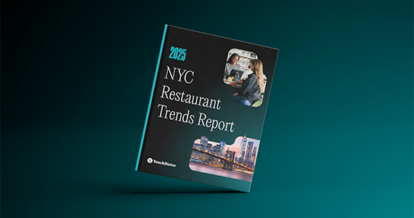If you manage a restaurant, labor forecasting is a critical process that will help you keep up with deadlines, lower labor costs, and boost productivity.
Since restaurants are labor-intensive businesses that rely heavily on front of house and back of house staff, workforce forecasting is essential to predict your labor needs so you can meet changing customer demands. Choosing to skip the labor planning process, however, can trigger issues like added costs, tumbling profits, and dissatisfied guests.
If you’re not quite familiar with the labor forecasting process, but want to get started, we’ve covered the basics here, including:
- What is labor forecasting?
- The benefits of employee forecasting for restaurant operators
- 4 staff forecasting methods for restaurants
- How to use restaurant POS data for labor forecasting
What is Labor Forecasting?
Labor forecasting is a process that predicts how many hours a business needs employees to work in the future in order to meet its business objectives.
For a restaurant, forecasting staffing needs means finding a healthy balance between overstaffing and understaffing. For example, if a restaurant is understaffed during busy peak times, like Thanksgiving dinner, it risks losing sales. Likewise, if there are too many employees working when the restaurant business is slow, like during the post-holiday rush in January and February, this will lead to unnecessary costs. With the right data, however, restaurant managers can properly estimate their labor needs and work towards protecting their bottom line.

Benefits of Labor Forecasting for Restaurants
From helping meet the demands of customers to improving guest satisfaction, labor forecasting can help you avoid understaffing or overstaffing issues. With the right amount of staff and scheduled labor hours, your restaurant may be more likely to meet business needs, fuel opportunities for growth, and focus on achieving goals that can improve your profit margin.
The following are benefits that a restaurant can achieve by investing efforts in employee forecasting:
Enhance the guest experience
When your team is working productively and with the right amount of employees, they should be able to focus on performing their best. For staff who are customer-facing, this means paying full attention to guests to provide better service. For example, if your team is low on waiters for a lunch shift, other team members will have to fill in. This can result in resentful and frustrated workers, which can also lead to a high restaurant turnover rate, low productivity, and poor customer service.
Increase employee retention
Employee forecasting can also help prevent understaffed work environments that result in increased responsibilities for team members, which can ultimately lead to burnout, mental stress, and absenteeism. With the employee rate turnover rate currently at 23%, ensuring employees are engaged and enjoy their work is more important than ever. Conversely, having too many staff working at one time can make employees feel undervalued and less motivated. That’s why it’s important to find a balance so that staff feel like they are making a difference and want to stay working at your restaurant.
Save time to focus on your goals
Managers and leaders use the staff forecasting process to plan their labor schedules to ensure they can meet customer demand. If your staffing schedule is set and everything is running well, then your restaurant leadership team will have more time to focus on their long-term goals. For example, they can spend more time on business development projects like marketing and branding, improving your workflow, and updating your restaurant training manual to upgrade the skills of your staff.
4 Labor Forecasting Methods for Restaurants

1. Historical Analysis
Historical analysis is a process that takes into account your previous month’s labor data, and then forecasting staffing needs are based on any common trends that you find. For example, if you have created your restaurant staffing schedule based on the staffing needs of the previous month, then you have used this staff forecasting method.
Here are questions to consider when making your historical analysis:
- What part of the day or times does your restaurant have the most guests?
- Are there times of the year that are slower than usual?
- Are there particular seasons where business is slower or faster?
- Is your customer flow affected by any holidays or events?
For restaurants, conducting a historical analysis can be very helpful, especially when identifying when your venue is the busiest and needs to schedule more labor to meet customer demand. Consider different times of the day like special events, weeknights, and weeknights. You can also look at mealtimes to figure out when you make the most and least revenue. For example, some restaurants are busiest at lunch hours, while others thrive at breakfast or dinner time.
2. Research Your Market
Market research provides insight into the trends of other companies in your industry to determine the future staffing needs of your business. For example, you can learn about when other restaurants are the busiest, what their staffing schedules look like, and how they are keeping up with demand. Then, you can use this information to predict your own labor needs.
One of the best ways to do market research is by networking with other restaurateurs to get their advice on scheduling and seasonal trends.
Here are questions to consider when doing your market research:
- Are there any external factors affecting other restaurants? For example, if there are high wait times at other restaurants, you could remain competitive by choosing to hire more staff to serve customers faster. This will also likely improve your guest satisfaction.
- Are there any particular slower or busier seasons in your geographic area?
- What is the average staff schedule for a restaurant the same size as yours?
3. Delphi Labor Method
The Delphi Labor method is a labor forecasting method used by businesses that have head decision-makers. For example, if you have a team of restaurant managers, you could use this workforce forecasting method to send them an anonymous survey about your venue’s labor needs for the future. Based on their responses, you would then make an informed decision on how to set your staffing schedule.
Here are questions to ask yourself when conducting a Delphi Method survey:
- Do you think the current labor schedule and processes are effective?
- Are decisions makers going to be honest if they answer anonymously?
4. Advanced Quantitative Methods
Advanced quantitative methods use historical data to determine future labor trends. What makes this employee forecasting method different from a historical analysis is that it relies on statistical and mathematical assessments. For example, advanced quantitative labor planning methods may look at workforce trends based on economic data in order to draw conclusions.
Typically, advanced quantitative methods will only be used by large organizations for forecasting staffing needs, like major restaurant chains for example, that need more insights on their expected labor needs.
5. Managerial Knowledge
Managerial knowledge is a staff forecasting method that determines your leadership team’s understanding of your restaurant’s labor capabilities and needs. Since good managers work directly with guests and team members on a daily basis, they should have a good understanding of when more labor is needed, and when it is not necessary.
Here are some questions you can use in a Managerial Knowledge Assessment:
- Are there any events or geographic trends that will bring in foot traffic?
- Have you put any new systems in place that will reduce the amount of labor needed? For example, do you use an advanced POS system that streamlines operations?
- Do you know about any employees wanting to leave their roles soon?
How to Use Restaurant POS Data for Labor Forecasting

Marketing drives guests and visits
Using a POS-integrated marketing platform, like TouchBistro Marketing, you can connect your restaurant with guests via email and in-app messaging campaigns. If you know you are sending out a promotion for Christmas break, for example, you might anticipate that your restaurant will be busier and that you will need more staff. Aligning your staffing needs with your promotions will ensure you are prepared to deliver on your promises.
Saving time building schedules
With a labor management solution like TouchBistro Labor Management, you can easily save time building your staff schedules each week by reusing existing schedules or creating new ones in minutes using the drag and drop feature. And while you’re building your schedules, the software automatically shows you if you’re over or under your set goals, like labor percentage. This way, you’ll be able to save time from having to make those calculations yourself.
And since TouchBistro Labor Management is integrated directly with your POS system you’ll save plenty of time from having to manually collect the data needed to help you forecast and predict your staffing needs. This way, you and your team can focus on more important tasks, like engaging with guests.
Reduce labor costs
Labor forecasting can also be an essential tool in helping you reduce your labor costs. For instance, a tool like TouchBistro Labor Management allows you to forecast your exact labor needs based on labor percentage, hours, costs, or number of employees, using net sales or guest count as the driver. In other words, when you’re building your schedules, the software helps you find cost-savings and show you where to make those adjustments, ultimately, ensuring you’re adequately staffing your venue, while also preventing unplanned overtime or extra labor costs.
POS data reports
Your restaurant labor decisions should be based on data, not a gut feeling. Fortunately, with a labor management solution, you can create custom ad-hoc reports to forecast for the future and make informed decisions regarding scheduling your staff. For instance, you can look at your sales reports to determine when your restaurant is the slowest and busiest, and then forecast your staffing needs at different times of the day, week, or year to more accurately predict the number of staff you need to have on hand.
At the end of the day, it’s important to figure out what workforce forecasting techniques work best for your restaurant. When practicing labor forecasting, remember to always look for missing gaps and opportunities that will help your restaurant grow faster. For example, achieving higher profits and increasing your team’s satisfaction at work can be as simple as lowering staff counts during slow seasons, and hiring more labor for your busiest times, like holidays. Most importantly, create a strategy for achieving your labor planning objectives and stick to it – whether that’s a plan for recruitment or reducing employees so you can stay on track.
Download your free employee handbook template
Sign up for our free weekly TouchBistro Newsletter







